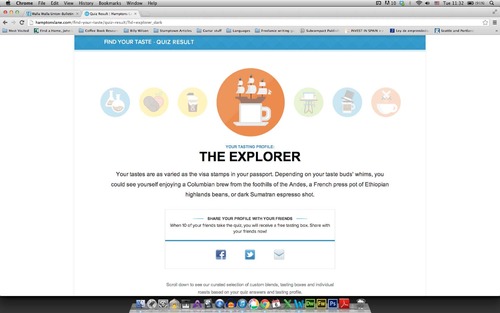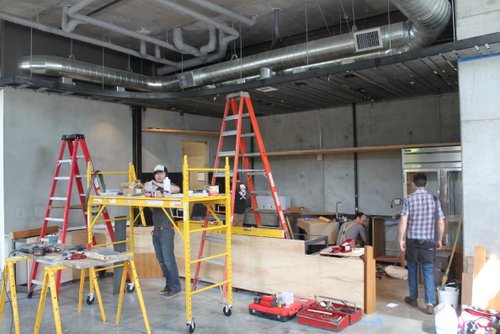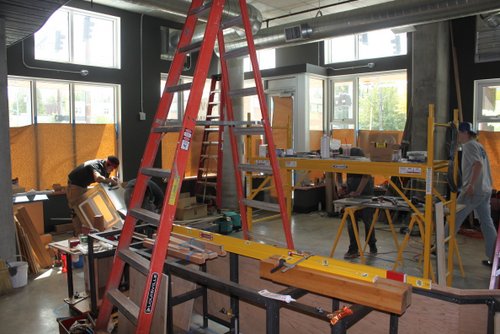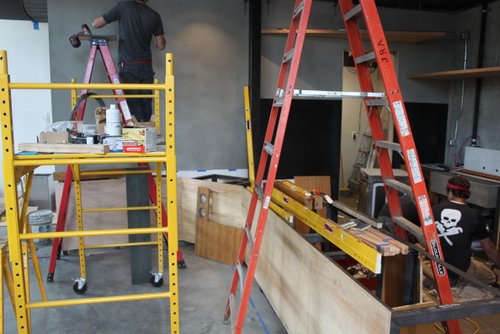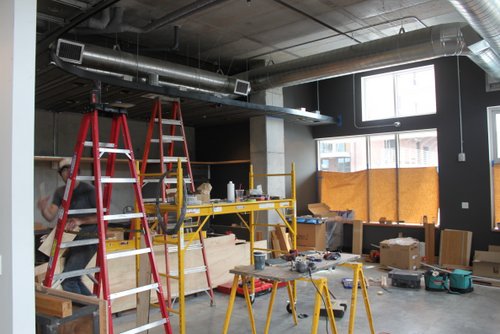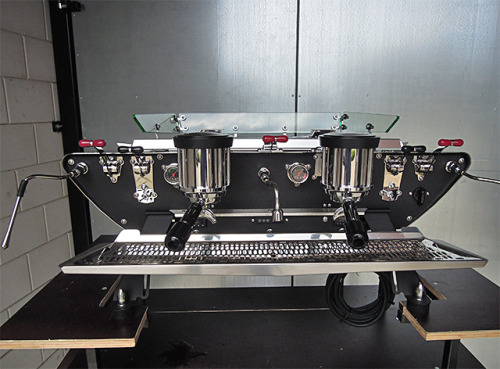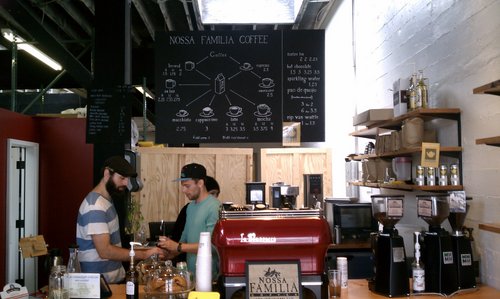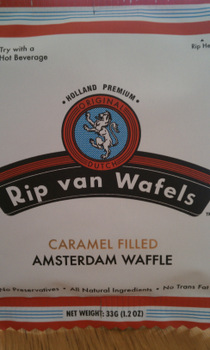After three weeks away for harvest, I returned to Portland last Thursday evening. To my dismay, the bus pulled into town in the middle of a big rainstorm. Ugh, I thought, not already—September is way too early for the gray season to return. (Fortunately, the sun has since come back and it appears summer will linger for a few more weeks.) Worries about winter weather notwithstanding, my mood was lightened considerably Friday morning by attending a cupping at Water Avenue Coffee. Brandon Smyth, Water Avenue’s co-owner and head roaster, recently returned from a buying trip to Guatemala, and he shared some of his new discoveries with a group that included Jannie Huang and Chelsea Broussard, both from Little Green Pickle, Zachary Carlsen, from Sprudge.com, Fabiola, from Not Just Baked, and someone from Imbibe (I didn’t catch her name).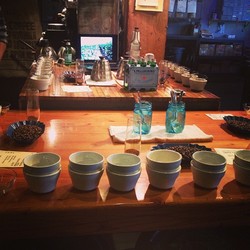 The table, ready to cup. Photo courtesy Chelsea Broussard, Little Green Pickle.
The table, ready to cup. Photo courtesy Chelsea Broussard, Little Green Pickle.
Brandon put several cups of five different coffees on the table and walked us through each of them. The first coffee we slurped was a yellow maracaturra variety from Finca San Jorge, run by Tulio Osberto Lemus Pinedo and his son, Tulio. The maracaturra is a cross between the maragogype and caturra varieties. When Smyth visited the farm, he noticed the maracaturra growing by itself in one area and convinced Tulio to separate it out from the rest of his coffees. Finca San Jorge only produced 600lbs. of maracaturra beans this year, and Smyth bought the entire lot, recognizing its potential.
The maracaturra stood out for its sweetness, both in aroma and in pre-roast sugar content. Brandon told me that a quality green coffee typically has a sugar content around 25%, as measured by a brix meter. The maracaturra ran about 30%, a significantly higher number. Brewed, the maracaturra was sweet and syrupy, with a very mellow acidity and heavy body.
Next, we cupped a yellow caturra, also from Finca San Jorge. Smyth described it as more of a “coffee” coffee, with flavors most people associate with coffee, including lots of chocolate notes. One of the cups especially stood out for its dry fragrance, full of sweet brown sugar and raisin notes.
The star of the table was the third coffee, a red caturra from Finca Santa Isabel, owned by the Valdez family, in the Cobán region. The coffee, which Smyth scored at 90+ points (very high), had the brightness and complexity of a Kenyan coffee, with rich fruit notes that reminded me of pie cherries and rhubarb. According to Brandon, coffees from Cobán are not usually this good—there must have been something that happened with the weather, or maybe the perfect fermentation conditions that turned the coffee into something almost magical.
Our fourth coffee was a red bourbon from Finca Huixoc in Huehuetenango. Finca Huixoc won awards at the Cup of Excellence in both 2006 and 2009. The coffee was a little earthier than I expected. Smyth said it was the coffee’s first roast, and he was still in the process of nailing it down.
The fifth and final coffee had an interesting twist. First, it was from El Salvador (Finca Manzano) instead of Guatemala. Second, before the coffee was roasted, the beans had been allowed to age for a couple months inside an oak barrel that previously held pinot noir wine. Aging inside the barrel gave the coffee a distinct, winy aroma and cherry flavor. The resulting coffee was quite interesting to cup, and its uniqueness would make an interesting topic of conversation if you served it at a dinner party.
Friday’s cupping, in addition to being a nice ‘welcome back’ to Portland coffee, taught me a few things about the differences within a country. Often, we hear the name of a coffee origin—Colombian, Guatemalan, Costa Rican, etc.—and immediately make assumptions about how the coffees should taste. This cupping, however, demonstrated the limitations of that way of thinking. Within a country, region, or even farm, the coffees produced can be quite distinctive, and the different types of coffee varieties also contribute to these differences. Lesson learned.
 Monday, September 16, 2013 at 10:35AM
Monday, September 16, 2013 at 10:35AM 


